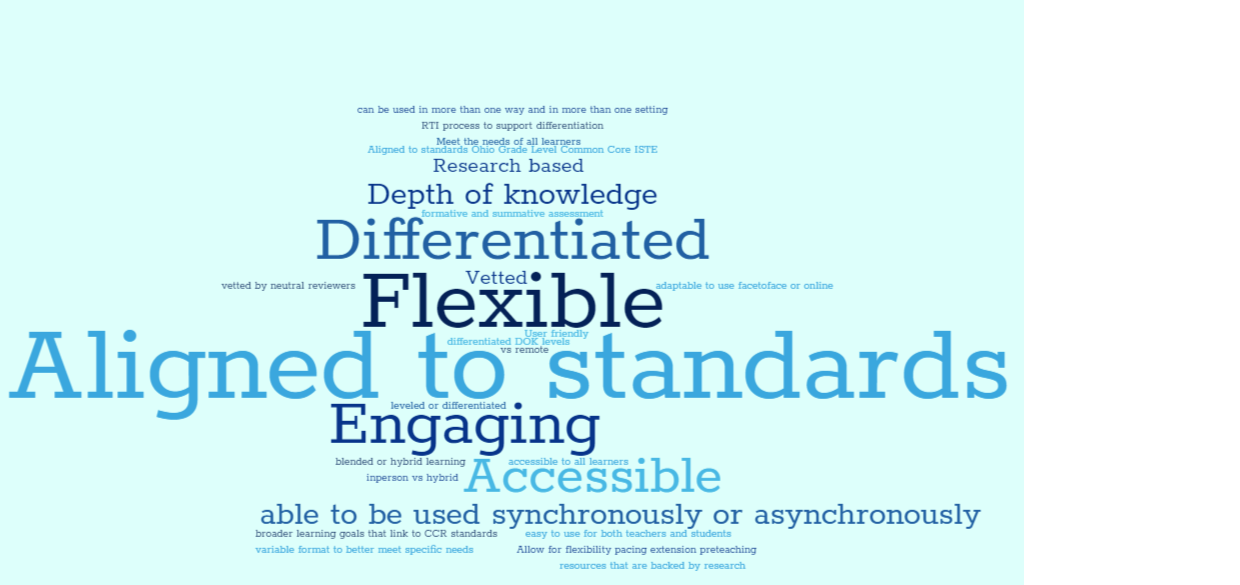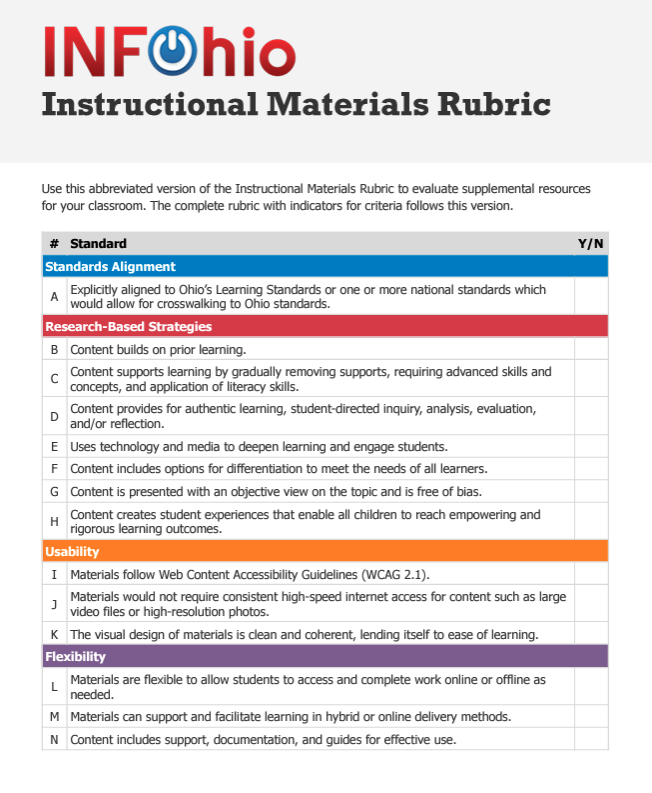
Learning Objectives
- Identify sources for high-quality instructional materials.
- Compare rubrics and rating tools used to identify high-quality digital instructional materials.
Rubrics for High-Quality Instructional Materials
In the What are High-Quality Instructional Materials? lesson, you learned about the characteristics of high-quality instructional materials. The word cloud below is a collection of these characteristics from a variety of resources.

Tools such as rubrics help establish whether instructional materials meet the criteria and indicators that make them high-quality. In this lesson, take a closer look at three rubrics used to evaluate materials:
- EdReports' English Language Arts rubric and evidence guide
- INFOhio Instructional Materials Rubric
While each rubric is different and is intended for diverse materials, there are similarities as well.
EdReports
Its transparent, reliable reports give schools and districts a good look at the overall effectiveness of educational content. Adoption committees searching for the best curricula for their students can view the reports free of charge. EdReports reviews both premium content and Open Educational Resources (OER) and uses rubrics designed by education professionals.
Below is an example focusing on English language arts. You also can review mathematics, science, or social studies rubrics and evidence guides from EdReports and rubrics from the Ohio Department of Education.
ELA High School Rubric and Evidence Guide
The review criteria for the rubric is:
- text quality and complexity, and alignments to standards with tasks grounded in evidence
- building knowledge with texts, vocabular, and tasks
- instructional supports and usability
The criteria identifies the indicators for high-quality instructional materials, primarily full curricula. It also supports a process that reflects how important standards alignment is to the quality of instructional materials.
View and read the rubric and evidence guide and answer the following questions.
The Evidence Guide complements the rubric with its review criteria. It provides details for the indicators, including scoring criteria, purpose, guidance for collecting evidence, and guiding questions and prompts.
View and read the guide below and answer the following questions.
- How do the gateways help support delivery of high-quality instructional materials?
- What indicators for criteria 1.1 and 1.2 are most interesting or important? What in your experience with teaching makes these stand out?
- How do the evidence guides help your understanding of the criteria and indicators?
INFOhio Instructional Materials Rubric
Developed with partners from the Ohio Department of Education, INFOhio's Instructional Materials Rubric is an evaluation tool that can be applied to most instructional materials. This rubric is used by INFOhio reviewers to identify high-quality instructional materials freely available online, often referred to as open access or Open Education Resources.


Extend Your Learning
Use a Venn diagram or simple T-chart to compare and contrast the rubrics from this lesson. Share your results with a colleague.